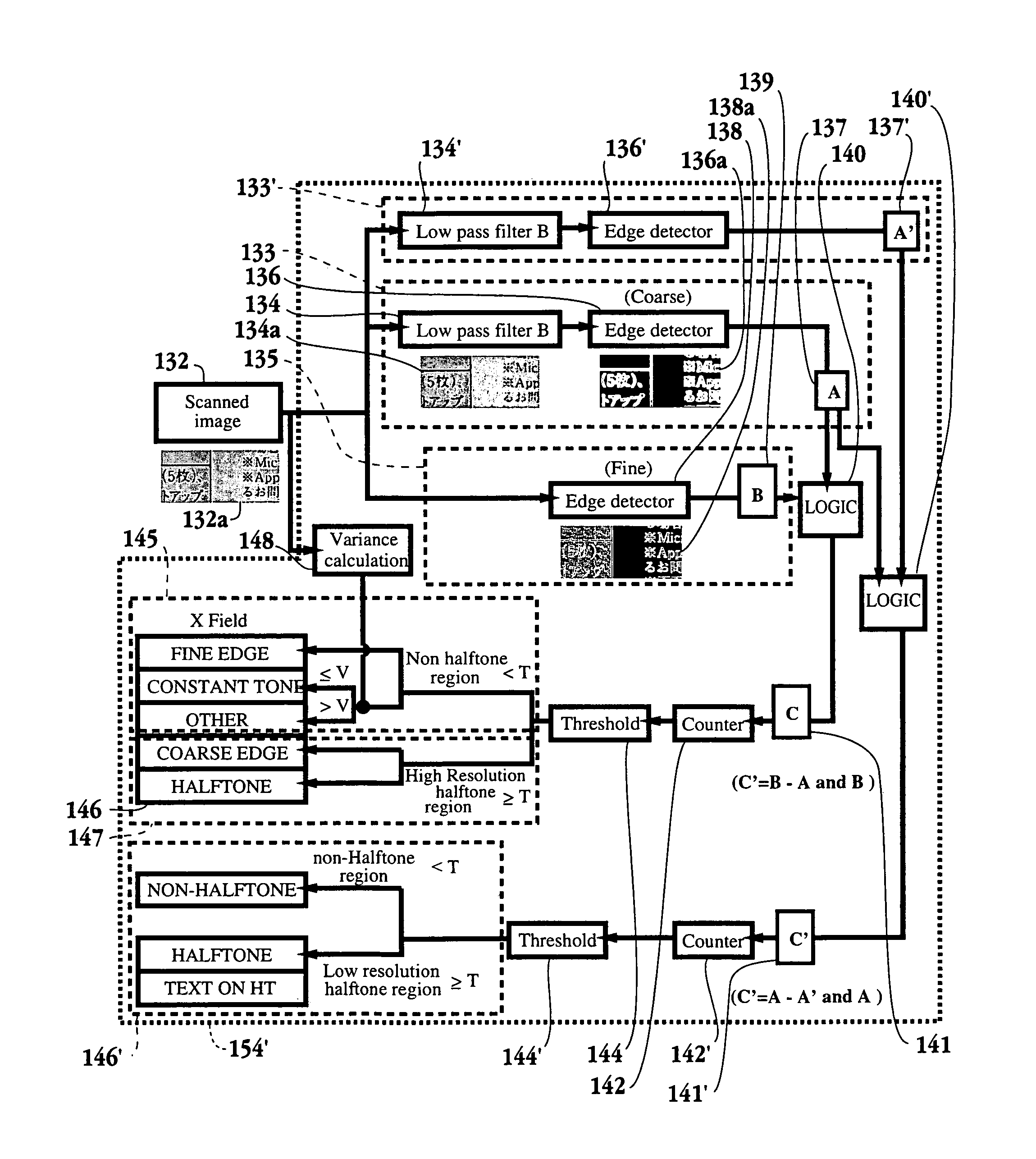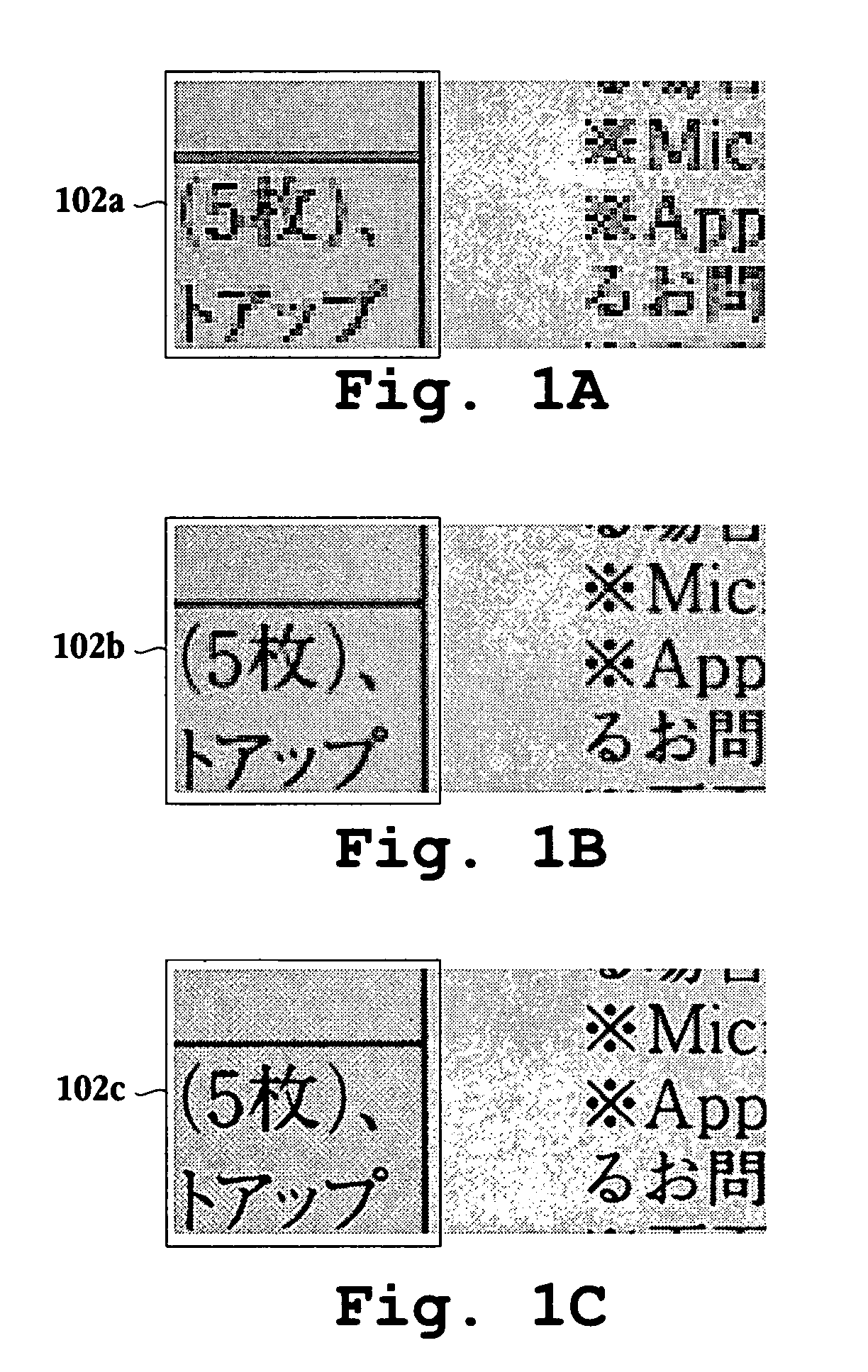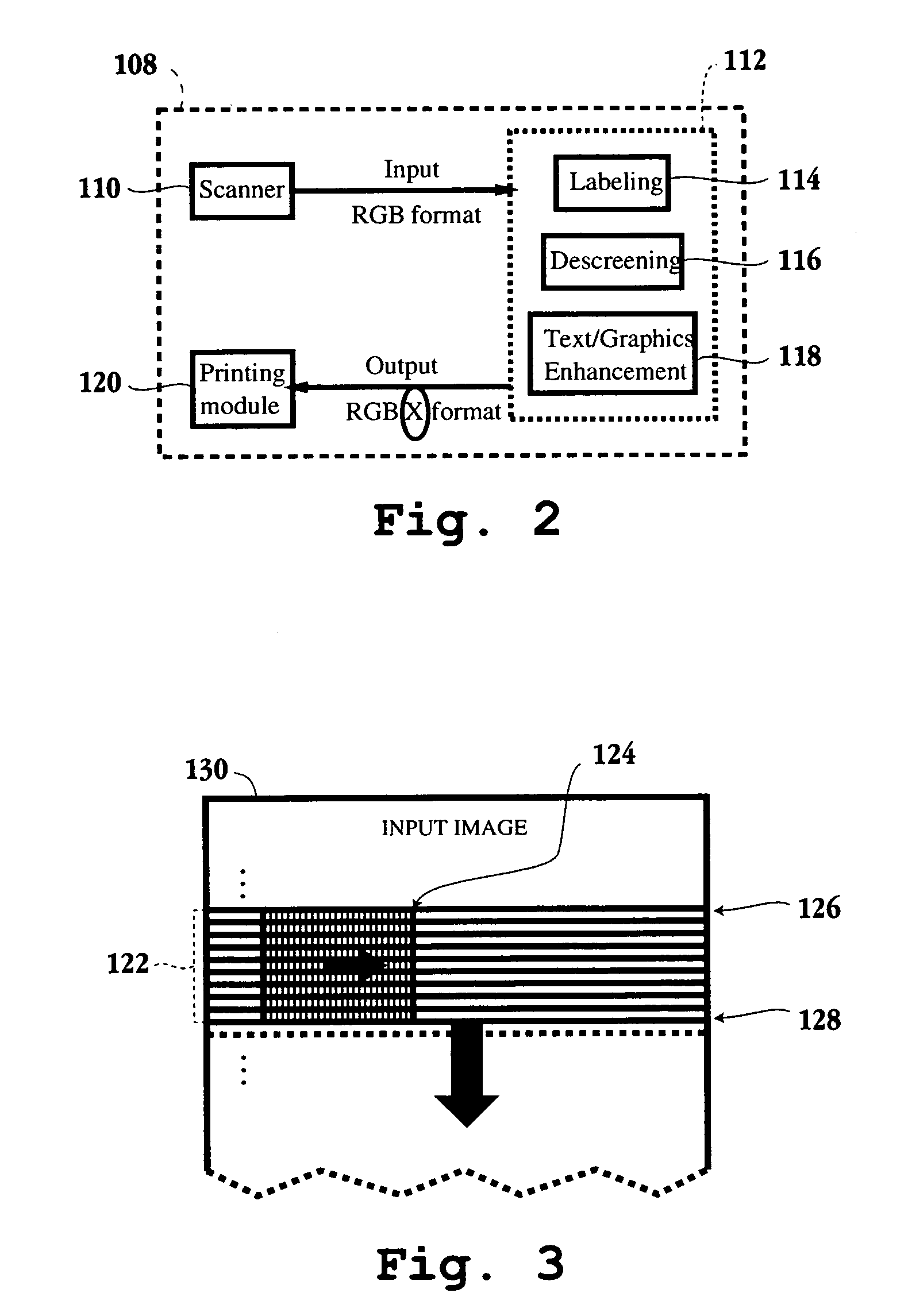Method and apparatus for segmentation of compound documents having low resolution halftones
a compound document and halftone technology, applied in the field of document replication systems, can solve the problems of low cost of signal processing algorithms, increased costs of these devices, and reduced signal processing efficiency, so as to achieve the effect of reducing noise, deblurring, and low cos
- Summary
- Abstract
- Description
- Claims
- Application Information
AI Technical Summary
Benefits of technology
Problems solved by technology
Method used
Image
Examples
Embodiment Construction
[0046]An invention is described for an apparatus and method for providing a stable output while minimizing moire patterns and visible structures when printing images from a printing device. It will be apparent, however, to one skilled in the art, in light of the this disclosure, that the present invention may be practiced without some or all of these specific details. In other instances, well known process operations have not been described in detail in order not to unnecessarily obscure the present invention. FIGS. 1A–1C are described in the “Background of the Invention” section.
[0047]The embodiments of the present invention provide an apparatus and method for segmenting, labeling and then enhancing an image consisting of various regions of pixels, e.g., text / graphics, images halftones, text / graphics on halftones, constant tones, etc. The image is decomposed into various types of regions so that enhancement techniques optimized for a particular region may be applied to that region....
PUM
 Login to View More
Login to View More Abstract
Description
Claims
Application Information
 Login to View More
Login to View More - R&D
- Intellectual Property
- Life Sciences
- Materials
- Tech Scout
- Unparalleled Data Quality
- Higher Quality Content
- 60% Fewer Hallucinations
Browse by: Latest US Patents, China's latest patents, Technical Efficacy Thesaurus, Application Domain, Technology Topic, Popular Technical Reports.
© 2025 PatSnap. All rights reserved.Legal|Privacy policy|Modern Slavery Act Transparency Statement|Sitemap|About US| Contact US: help@patsnap.com



